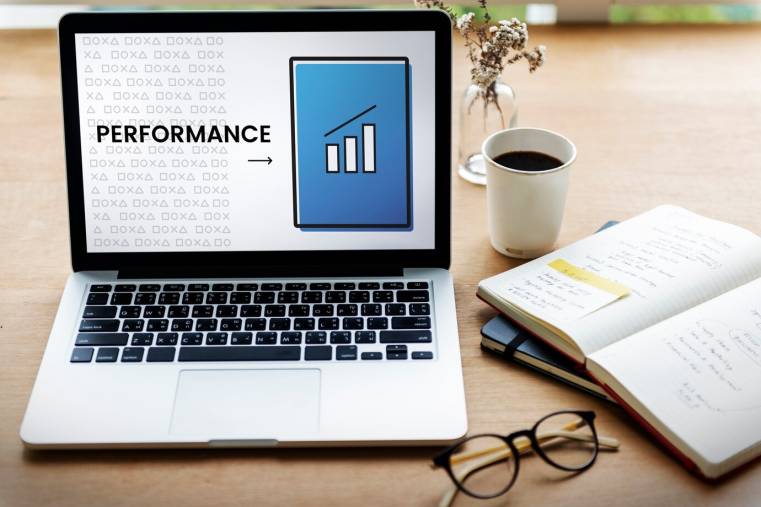Welcome to the future of performance marketing, where creativity meets cutting-edge tech! In 2025, forget everything you thought you knew about digital advertising – this isn’t your typical marketing playbook. With AI, machine learning, omnichannel magic and even shoppable videos turning viewers into instant buyers, the game has completely changed. Imagine an era where your ad campaigns are so smart they can predict consumer behavior and adapt on the fly, while influencer partnerships evolve into genuine community collaborations. Well, buckle up, because the ride into the future of performance marketing is about to get wild – and we’re here to show you how to lead the digital world!
Key Trends Shaping Performance Marketing in 2025
1. AI and Machine Learning Integration
AI and ML are at the heart of many changes in performance marketing. In 2025, these technologies are used not only for automating bidding strategies on ad platforms but also for predictive analytics and customer segmentation. AI algorithms can analyze historical data to predict future trends, foresee emerging trends and thus predict user actions, allowing marketers to anticipate consumer behavior and fine-tune campaigns with exactness. By capitalizing on these insights, brands can refine audience targeting, boost ROI and enhance efficiency across every channel.
For example, AI-powered Dynamic Creative Optimization (DCO) enables the automatic customization of ad creatives in real time based on user behavior, location and preferences. This results in highly personalized ads that resonate better with the target audience, thereby increasing engagement and conversion rates.
Moreover, the immersion of AI agents into the mix – through interactive chatbots and virtual assistants – further enriches the customer journey, delivering real-time support and personalized recommendations that drive brand loyalty and conversions.
2. Employee-Generated Content (EGC)
Employee advocacy is more than just a trendy term – it’s a robust approach that harnesses your team’s unique voices to enhance brand visibility, engage audiences, spotlight social causes, and drive business results.
This strategy is particularly effective on LinkedIn, the ideal platform for both employees and employers to share such content. The B2B network is steadily growing and is expected to exceed 800 million users by 2025. With consumers demanding greater transparency – Forbes reports that 94% are more loyal to brands that are fully open – EGC delivers authentic stories from within the company.
Moreover, this approach builds trust, and many brands are now incorporating behind-the-scenes content into their marketing efforts to further connect with their audience.
3. First-Party Data, Privacy and Regulations
In recent years, data privacy has become a top concern for both consumers and regulators. With the implementation of regulations like GDPR, CCPA and other local privacy laws, performance marketers must now navigate a complex regulatory landscape, so they will have to focus on collecting data using consent-based methods like loyalty programs and surveys. Enhanced privacy technologies and consent management platforms (CMPs) will empower brands to offer customized marketing while maintaining compliance and nurturing trust in a privacy-centric environment. In 2025, there is a greater emphasis on privacy-first marketing strategies.
With third-party cookies fading out, marketers are increasingly relying on first-party data and investing in secure data management platforms to ensure compliance. Privacy-centric approaches, such as contextual advertising and the use of anonymized data, are becoming more prevalent. This shift not only protects consumer privacy but also builds trust with the audience, which is critical for long-term brand loyalty.
4. Omnichannel Marketing Integration
The modern consumer interacts with brands across multiple channels. In 2025, performance marketing will no longer be confined to isolated campaigns on a single platform. Instead, it will embrace an omnichannel approach, where online and offline channels are integrated seamlessly.
This integration allows marketers to deliver a consistent and unified brand message across various touchpoints, including social media, search engines, email, and even brick-and-mortar stores. The ability to track and measure performance across these channels cohesively is driving more holistic marketing strategies that improve overall customer experience and increase conversion rates.
5. The Rise of Influencer and Customer Partnerships
No more paying influencers just for ‘awareness.’ Brands are shifting to results-driven influencer partnerships, focusing on conversions.
Influencer and affiliate marketing have grown significantly over the past few years, and by 2025, they will be integral to many performance marketing strategies. Instead of being seen as separate from digital ads, influencer collaborations are now being measured and optimized like any other channel.
Performance marketers are using sophisticated tracking methods to monitor the ROI from influencer partnerships, ensuring that every collaboration delivers measurable results. This integration of influencer marketing with traditional performance metrics has blurred the lines between content marketing and performance marketing, creating new opportunities for brands to reach highly engaged audiences.
Besides that, in 2025, we expect to see brands shifting away from relying solely on major influencers, and instead focusing on cultivating their own communities. Companies will invest more in strengthening bonds with their loyal customers and regular followers – those who consistently interact with their content. As a result, we’ll witness a rise in co-created, collaborative content.
As the concept of user-generated content (UGC) has been put on a hold, many brands are now partnering directly with their customers to adopt a community-first strategy. This collaboration leads to customer-created content that can be used in advertising or showcased on the brand’s own social feeds.
6. Retail Media Boom
Amazon, Walmart and even Shopify are turning into advertising powerhouses, offering new ways to reach high-intent buyers directly on their platforms.
In 2025, retail media networks are expected to lead the digital advertising arena, as major retailers provide brands with access to precisely targeted consumers using their own purchase data. Innovative ad formats and the flawless merging of online and offline campaigns will render these networks essential for engaging shoppers right at the moment of purchase.
7. Shoppable & Interactive Ads
From TikTok to Instagram, shoppable ads, live commerce and interactive ad formats are making it easier than ever for consumers to buy instantly.
Shoppable video is set to lead the way, allowing direct purchases from live broadcasts, short clips, influencer promotions and more. Platforms like TikTok may face uncertainty in some regions, but other video giants like YouTube will harness interactive formats and AI-driven suggestions to convert casual viewers into active buyers. Live-stream shopping events will blend entertainment with commerce, crafting immersive experiences that boost conversion rates.
8. AI-Driven Attribution Models
Forget last-click attribution – incrementality testing, AI-driven attribution and data clean rooms are becoming the norm to measure real impact.
Incrementality testing goes beyond simply crediting the last touchpoint—it evaluates how much a marketing effort truly adds compared to a baseline scenario. This method helps isolate the genuine contribution of each channel by running controlled tests to understand the incremental lift provided by campaigns.
AI-driven attribution leverages machine learning algorithms to assign conversion credit across all marketing channels. Unlike last-click models that give all the credit to the final interaction, AI-driven approaches analyze vast amounts of data and account for complex customer journeys. This results in a more nuanced and accurate picture of how each channel contributes to conversions.
Data clean rooms play a critical role by allowing marketers to securely aggregate and analyze data from various sources while maintaining privacy compliance. These environments enable collaborative insights between partners without exposing sensitive individual data.
9. Programmatic Advertising
Privacy challenges still loom large, yet programmatic advertising remains a powerful growth engine. Marketers are shifting from a channel-first approach to an audience-first, omnichannel strategy that helps counter signal loss and unifies campaigns.
Marketers today understand the value of engaging consumers across channels like CTV, display, audio and DOOH. Research shows that “buying media in isolated silos is less effective than a holistic omnichannel strategy focused on the audience,” explains Megan Price, Programmatic Supervisor at FYND Media.
The rise of streaming platforms is driving the expansion of programmatic Connected TV (CTV). In 2024, key partnerships emerged as platforms like Roku and Netflix broadened their programmatic options, allowing advertisers to target highly engaged viewers with improved audience segmentation and measurement.
Similarly, programmatic DOOH is experiencing rapid growth due to better targeting, measurement, and easier buying processes. As brands move away from direct deals with high minimum spends, the flexibility of an omnichannel, audience-first approach is making DOOH an increasingly attractive option.
Are you NOW ready to transform your marketing? If so, let’s blend creativity and performance. Get in touch with Wizard today!

